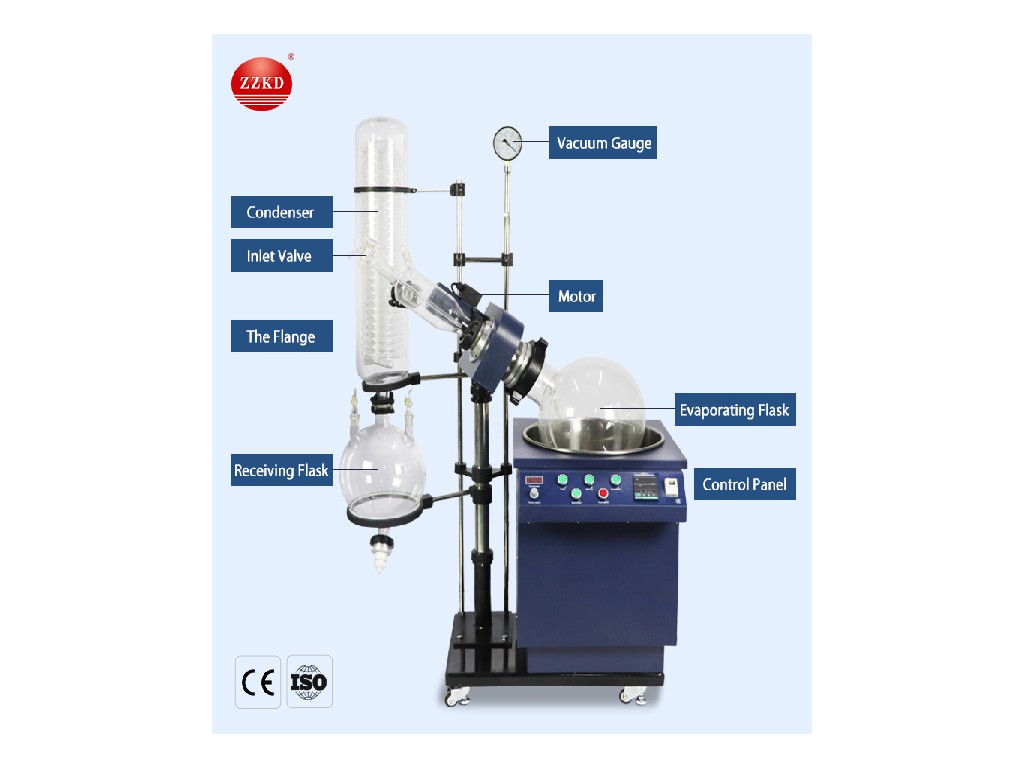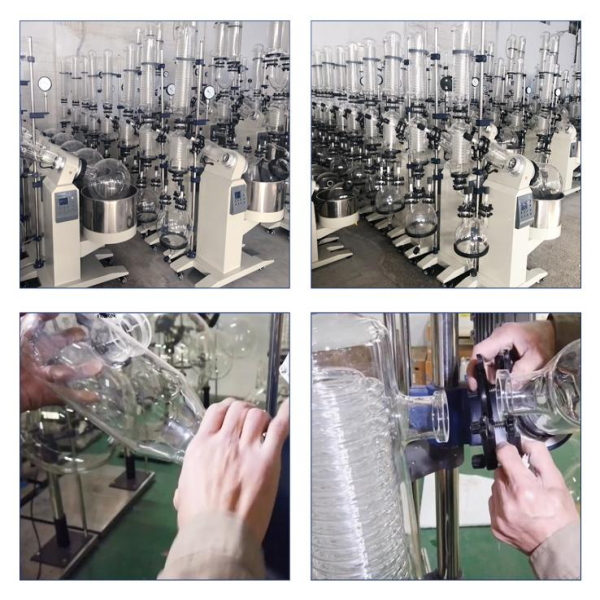Rotary Evaporator Splash Ball Can Not Be Removed?

Encountered that this kind of rotary evaporator splash ball cannot be removed, the editor will share with you a set of commonly used solutions:
1. Shake
If the splash-proof ball is not very tightly attached, you can wear canvas gloves (safety is important, please wear scratch-resistant canvas gloves in any case of force on the glass), shake it horizontally and forcefully to see if it can be removed. If you still can't take it off, please don't have the idea of a miracle, don't shake it hard, and avoid breaking the glass shaft and explosion-proof ball. Go directly to the next step.2. Knock (as long as it doesn't explode)
Find a plastic bottle that is common in the laboratory, extend toward the anti-splash ball, make a circle along the edge of the anti-splash ball interface, tap the anti-splash ball with a small force, and connect the anti-splash ball with your hand to prevent the anti-splash ball from falling and breaking. under this condition, it can usually be knocked down. If it doesn't work, don't hit it with too much force to prevent breaking the glass shaft of the rotary evaporator. Go to the next step below.3. Frozen
Take off the anti-splash ball together with the glass shaft, put it in a dry ice ethanol bath for 2~3 minutes (the inside of the pipe must enter the frozen liquid, and let the inside shrink by cold), take it out, and rinse the ethanol with water first (hot air gun). It is an open flame and there is a risk of burning), quickly bake the interface with a hot air gun, and if you still cannot remove the splash-proof ball, repeat this operation. This step does not work, go to the next step.4. Roast
Rotate the Vacuum Distillation Rotary Evaporator slowly, blow the interface evenly with a heat gun, and repeat the above "knock" steps while it is still hot (this method is more suitable for the case where the sample sticks to the interface). If it still cannot be removed, go to the next step.5. Ultrasonic vibration
Take off the anti-splash ball together with the glass shaft, put it in the ultrasonic cleaning machine, wash and shake for 10 minutes, put on canvas gloves and shake it horizontally to see if it can shake. If it can shake, please slowly pull out the glass. axis. If the above methods can't remove the splash ball, you can only resort to the ultimate big move - a miracle "smashing" vigorously.6.Smash
Before smashing, please wrap the anti-splash ball with a towel to prevent accidental injury to the operator due to glass splashing during smashing. There is nothing that can't be solved by one hammer for glass parts, if there is, then another hammer!Actually, this method can also be applied to other glued-together glass interfaces. Friendly reminder: hold back your violent temper, it is better not to smash or not to smash.
How to avoid the embarrassing problem that the above splash-proof ball cannot be removed?
1. Clean the glass interface before use to prevent sample residue from previous experiments;2. The splash-proof ball can be coated with a thin layer of vacuum silicone grease before use;
3. After the experiment, clean up the instrument in time;
4. Do not connect the splash ball to the Vacuum Distillation Rotary Evaporator all the time without doing the lab

Let me tell you a little trick for anti-scaling treatment of rotary evaporator:
1. A small amount of continuous drainage device is used to control the concentration ratio of calcium ions in the cooling circulating water of the rotary evaporator and air cooler within a certain range, effectively preventing the precipitation of scale. Reducing the calcium ion content in the cooling circulating water of the rotary evaporator, the air cooler and the closed cooling tower is the best way to control the scaling problem.2. Set up pre-coolers in the rotary evaporator and air cooler, so that the evaporation temperature of the tube surface of the rotary evaporator is below 40 °C. At the same time, a large amount of water and a dense water distributor are used to ensure that the surface of the condenser tube is always covered with water film. Coated, no dry spots. Setting up a pre-cooler and preventing the occurrence of dry-up points have preventive effects on the scaling problem of rotary evaporators and air coolers.
3. Pre-film anti-scaling treatment is performed during the manufacture of the rotary evaporator. When making the rotary evaporator, the use of pre-film and anti-scaling can form a protective film on the surface of the pipe of the rotary evaporator and the air cooler, which can effectively prevent the fouling crystals from adhering to the surface of the copper tube, reduce the possibility of scaling of the rotary evaporator, and prolong the rotary evaporation. The structural cycle of the air conditioner and the air cooler.
More tips about Applications Of Rotary Vacuum Evaporator will be updated constantly~ Please keep following ZZKD!
For more information on rotary evaporators: RE-501 rotary evaporator, RE-2002 rotary evaporator, etc., please contact us~




